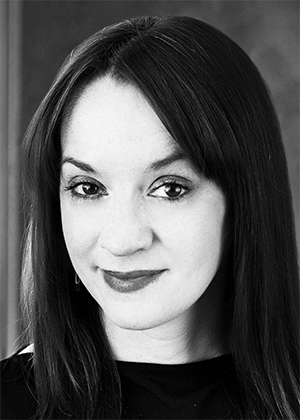Citation

Courtney Humphries stands out in the science writing community for her fascination with urban ecology. She’s drawn less to storied mountain peaks and shimmering valleys than to the gritty and adaptive landscapes found in the scraps of green space in American cities.
It illuminates her journalistic work, dating back almost a decade to her widely praised book Superdove, which explores the surprisingly complex nature of city-dwelling pigeons. She’s described that work as “the hidden history behind a ubiquitous bird.” That emphasis on the rarely seen nature of our everyday environment will tell you how important this is, an exploration of how life both thrives and fails in our human-altered world.
Courtney was a Knight Science Journalism Fellow in the 2015–2016 academic year, and she used the time to strengthen her background in this area. She studied urban ecology at Boston University, with an emphasis on the carbon and nitrogen cycles of the city. She investigated the environmental issues surrounding urban streams and suburban forests. She turned that into some outstanding reporting, ranging from a story for Undark on the global impacts of suburban development to a series of articles for Architect on energy-efficient building designs.
Her story “Where Forests Work Harder,” which received the 2017 David Perlman Award, is a case in point. Published in CityLab, the article takes an in-depth—and unexpectedly revealing—look at the suburban forests surrounding Boston. Courtney walked through these forests in slow, tree-by-tree detail, with scientists who were carefully comparing the respiration of trees growing along the edges of cities with those in both more rural and more urban environments.
As she noted, their findings were surprising, even to the scientists. Trees living at the “edges” tended to thrive, grow faster, take in more carbon dioxide. The researchers suggested that nearby human activities might create a kind of garden environment that fosters this growth. That didn’t mean that the scientists were advocating for patchy small forests over the extensive forests of the protected wild. Not at all. But they did at least see some environmental good news in the results.
The story is filled with nuance and context, illustrating the sophisticated approach she brings to such reporting. It offers an outstanding example of essential principles of good science writing—that a journalist who does her homework provides justice to the subject and service to her readers.
—Deborah Blum, Massachusetts Institute of Technology, Cambridge
Response
It is an incredible honor to receive the David Perlman Award, and it’s especially poignant to receive it in the year that its namesake—the incomparable science editor at the San Francisco Chronicle—retired from daily journalism at the age of 98.
Receiving an award in his name gives me not only a high standard of journalism to aim for but also a model of lifelong service to the public and to one’s own curiosity.
This story is about carbon dynamics in suburban forests, but it’s also about what we can learn from the everyday, human-influenced landscapes around us. It illustrates how we affect other species and ecosystems in unexpected ways.
This news article benefited considerably from time I spent as a Knight Science Journalism Fellow at the Massachusetts Institute of Technology, where I was able to devote some unencumbered months learning about ecology, climate change, and urban ecosystems. Later, when an interesting paper came along, I was able to pitch and write a story quickly because of previous knowledge and relationships I’d established as a Knight Fellow.
So I’d like to put in a plug for fellowships, boot camps, and other programs that help journalists learn about research outside of the news cycle. They simply make our stories better.
I’d like to thank Deborah Blum, the director of the Knight Fellowship, for her support and kind words here. I’m grateful to Mark Byrnes, my editor at CityLab, who said yes to a cold pitch from a new writer about a topic that might seem esoteric and who shepherded the story through to publication. I’m also grateful to Lucy Hutyra, who allowed me to sit in on her urban ecology class at Boston University, and to Andy Reinmann, who gamely took a couple hours out of his week to tromp through the woods with me at short notice. I’m also appreciative of the other scientists—Nick Haddad, Robert McDonald, and Jonathan Thompson—who took the time to offer perspective and background well beyond what was quoted in the story.
—Courtney Humphries, Freelance Journalist, Boston, Mass.
Citation:
(2018), Courtney Humphries receives 2017 David Perlman Award for Excellence in Science Journalism–News, Eos, 99, https://doi.org/10.1029/2018EO090207. Published on 11 January 2018.
Text © 2018. The authors. CC BY-NC-ND 3.0
Except where otherwise noted, images are subject to copyright. Any reuse without express permission from the copyright owner is prohibited.
